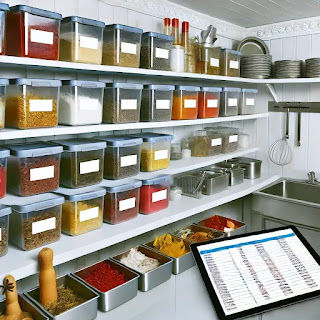Search This Blog
Dine to Success is your go-to resource for mastering the art of restaurant management. Whether you're a seasoned restaurant owner or just starting out, our blog provides actionable strategies and insights to help you boost efficiency, manage costs, motivate your team, and enhance customer experience.
Featured
- Get link
- X
- Other Apps
10 Proven Strategies for Effortless Restaurant Employee Scheduling: Boost Efficiency & Morale
Running a restaurant is no piece of cake. Of the many headaches that restaurant owners or managers have to put up with, employee scheduling is one of those that takes so much of their priceless time and consideration. It's not just a matter of filling in the shifts, but it is also about balancing labor costs, employee satisfaction, and service. In this guide, we will be walking you through 10 proven strategies that make restaurant employee scheduling easier, efficient, and better for one and all.
Why Scheduling Matters to Restaurant Employees
Effective scheduling involves so much more than just essentially looking out for the bottom line to make sure there are enough people to work the shift in question. It is optimizing performance, managing labor costs, and providing an environment that allows employees to feel valued. Poor scheduling leads to the burnout of the staff, increased turnover, and will eventually lead to a decrease in customer satisfaction. On the other hand, the better a schedule is organized, the higher the morale of the employees will be, which, in turn, reduces labor costs even further, and the overall quality of the guest experience improves.
If you find yourself struggling to create a schedule that works for you and your team, here are some tips that will give real insights into how to make this easier.
- Utilize Employee Scheduling Software
Scheduling by pen and paper or spreadsheet is extremely archaic and labor-intensive in today's digital world. Restaurant scheduling software automates the entire process, helping you to free up your time and reduce errors. Software solutions such as 7shifts, HotSchedules, or When I Work enable you to schedule shifts with ease, while keeping track of availability and time-off requests—all while maintaining compliance with labor laws.
Benefits of Scheduling Software:
- Up-to-the-minute notifications for employees and managers.
- Automated notification for overtime or conflicts.
- Improved mobile application-based communication.
By adopting the software, you take away the guesswork and manual labor, freeing your time for other important details concerning the restaurant.
Peak Hours and Staffing Needs
Clearly, every hour of the day does not demand the same amount of employees. You're going to want to look at historical data, such as sales reports and customer foot traffic, to determine exactly when your peak hours occur. By understanding when you need the most hands on deck, you can create more efficient schedules.
For example, if your peak hours are Fridays between 6:00 p.m. and 9:00 p.m., then you need to add more experienced staff during these hours. You would need just a few employees when you are less busy. These statistics-driven insights will ensure that you neither overstaff nor understaff, saving labor costs in the process.Employee Shift Swap
Giving your team the right to swap shifts can translate into happy employees and not as many last-minute scheduling conflicts. Also, having a basic, straightforward shift-swapping policy can ensure that the shifts will get covered without needing the management's intervention in every single swap.
Many scheduling software includes shift-swapping features where employees can propose swaps and management can approve with a single click.
Pro Tip: Let employees know that swaps need to be approved in advance, since it might create confusion on the shift date.
- Plan Ahead, Plan Schedules in Advance
The last-minute posting is one of the fastest ways to upset employees. Try instead working toward publishing schedules at least two weeks in advance. This allows your staff ample time to plan personal lives and make requests for changes when needed.
Knowing what to expect helps employees to plan their time more effectively; therefore, they will have job satisfaction that can lead to lower turnover. Secondly, advance planning gives an opportunity to identify any potential gaps or conflicts well in advance before they may be a problem.
Consider employees' preferences
While it's impossible to accommodate everyone's requests at all times, showing that you value employee preferences goes a long way toward loyalty and morale. If an employee continually prefers morning shifts or has regular commitments on certain days, try to honor those preferences when possible.
You can track availability and preferences through scheduling software, so you can make sure requests are factored into the scheduling process. Flexibility fosters a positive work environment, and your team will do great work once they're motivated.Cross-Train Workers
Cross-training your staff means you will be able to cover more shifts with fewer people. The more employees you can train in multiple areas, such as waiting tables, bartending, or helping in the kitchen, the more options you have when it comes to considering scheduling.
This also relieves pressure on trying to fill shifts, as well as any last-minute changes. Cross-trained employees will feel more valued and versatile, boosting their satisfaction and commitment towards your restaurant.
Labor Forecasting
Labor forecasting can be done by looking back in history, observing trends, and seasonality in order to find out the approximate number of workers a business might need on any given day. For example, if one knows that during holiday weekends, the number of clients going to one's restaurant increases, then one should schedule employees accordingly.
By combining sales forecasts with any scheduling software, you are able to create far more realistic schedules that reflect expected demand. This helps cut down overstaffing to keep costs down and understaffing, which leads to stressed-out employees and unhappy customers.Monitor Overtime Closely
Overtime is one of the costliest restaurant scheduling mistakes that will occur. When your employees are constantly clocking in for extra hours, it doubles and triples on your labor costs. Use scheduling software to determine how close employees are to hitting overtime and manage shifts accordingly.
Having overtime alerts set and automatically capping hours on your employees can help stay within budget and not burn out your team. This helps in a good balance of costs and workload.
- Open Communication
Only through active communication with your employees can you develop a flexible but fair scheduling system. Hold regular meetings or at least check-ins when the staff can express their observations or suggestions regarding the current process of scheduling. Are there enough shifts for everybody? Is the conflict managed justly?
This open dialogue you encourage lets the employees know their input is valued, thus creating a much more positive and cooperative workplace. Inclusion brings better schedules that better fit everyone's needs and therefore less conflict and greater satisfaction among employees.
- Periodically review and optimize schedules
Even the best schedules need to be tweaked from time to time. Get into the habit of regularly reviewing your scheduling process. Are shifts adequately covered? Are you within labor budgets? Are employees satisfied with their schedules?
Take all feedback from your team and your own experience to fine-tune the process. Routine optimization will enable you to get ahead of any potential problems and have your scheduling system humming along.
Conclusion: Simplify Your Scheduling to Success
Effective restaurant employee scheduling is more than just filling shifts; it's creating a balanced, productive, and happy workforce. You'll be capable of relieving some headaches off your scheduling burden and boosting morale with these tested and tried strategies to improve your restaurant's effectiveness.
Now that you have gone through how to optimize your scheduling process, go and put the tips into action! Streamline your restaurant's employee scheduling today with the right tools and techniques. Whether you're ready to take the plunge and make the next step toward easier, smoother operations and a happier workforce, or simply take a little time to explore some of the many excellent scheduling software options out there—or sit down and chat with your team about how you can make things better—let's get scheduling: your restaurant, and your staff, will thank you!
Call to Action:
Liked this article? Share it with other restaurant owners or managers you think might benefit from these scheduling tips. And if you want more actionable restaurant management strategies, then don't forget to subscribe to our newsletter.!
Ready to take your restaurant to the next level? Then make sure to begin practicing these strategies today and see the difference they can make!For more in-depth guidance on creating a winning restaurant business plan, check out my comprehensive book: "The Ultimate Restaurant Success Handbook: Scaling, Managing, and Sustaining Long-Term Growth." available on Amazon: https://www.amazon.com/dp/B0DJQDVC12
This resource provides step-by-step instructions, real-world examples, and expert insights to help you create a business plan that sets your restaurant up for success. Don't start your culinary journey without it!
- Get link
- X
- Other Apps
Popular Posts
10 Proven Strategies for Efficient Stock Reordering and Waste Prevention in 2024
- Get link
- X
- Other Apps
10 Essential Tips for Managing Restaurant Inventory Efficiently
- Get link
- X
- Other Apps


Comments
Post a Comment